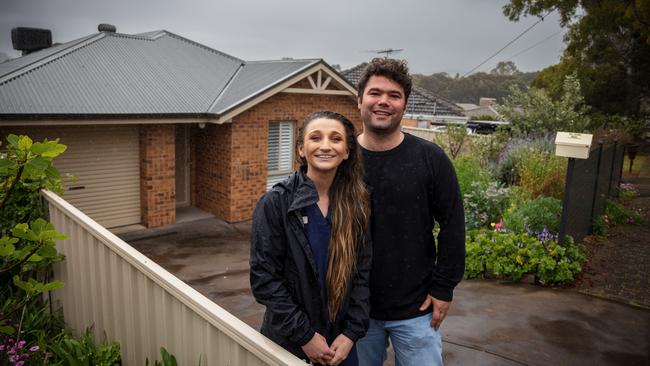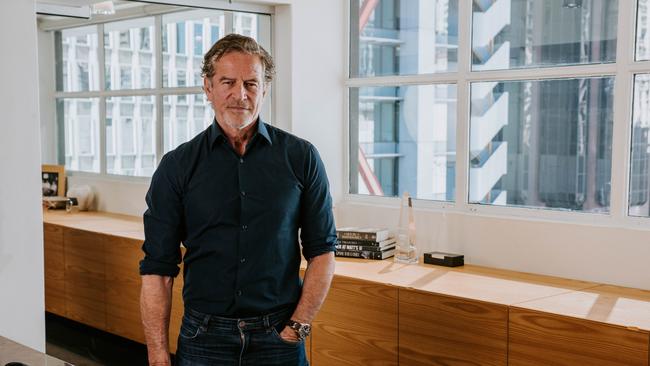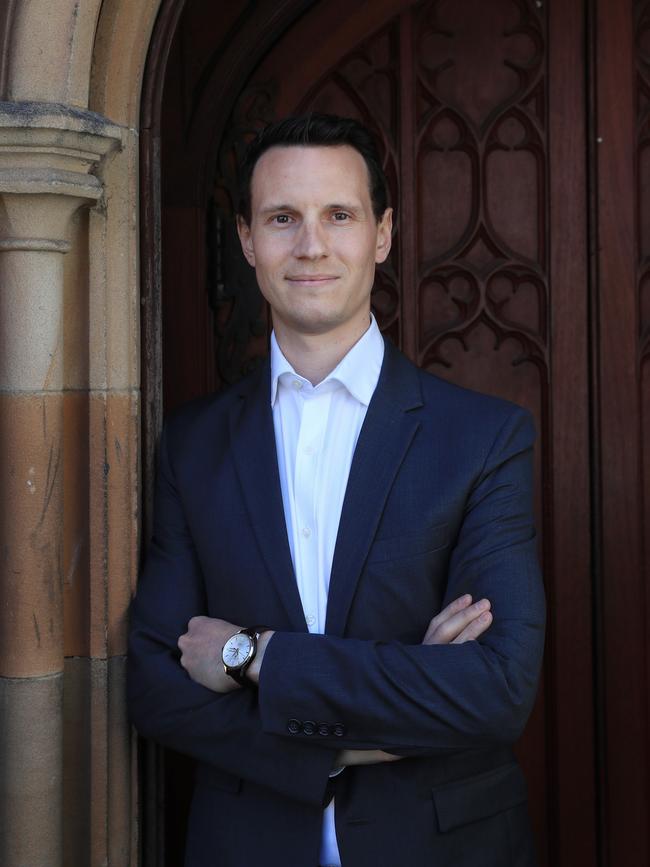Mortgage burden approaching 1990s pain as affordability falls to worst levels on record
Australian homeowners are feeling mortgage repayment pressure similar to baby boomers who paid 17.5 per cent interest in 1990 as housing affordability slumps to the worst levels on record.

Homeowners are feeling similar mortgage repayment pressure to baby boomers who paid 17.5 per cent interest in 1990, as housing affordability slumps to the worst levels on record.
Housing research group PropTrack’s annual Housing Affordability Index reveals the worst conditions for homebuyers on record as continued property price increases and decade-high interest rates remain stubborn.
The analysis found that a median-income household earning $112,000 annually could afford only 14 per cent of all the homes sold last financial year, the smallest share since records began in the 1994-95 financial year.
Just three years ago, the same household could have comfortably purchased 43 per cent of houses or units.
Property prices rose 6.6 per cent nationally over the year to June, the equivalent of a $50,000 increase. The average first-home buyer household now must set aside a fifth of their income for 5.6 years to save a standard 20 per cent deposit for the median home.
PropTrack economist Angus Moore said despite interest rates being well below the 17 per cent paid by baby boomers in 1989 and 1990, the amount of debt today’s home loan generation is taking on means the repayment burden is almost comparable.
“Debt burdens relative to income are a lot higher today than they used to be, so you don’t need as high mortgage rates before mortgage repayments become similarly burdensome,” he said.
“So, we’re on par with the last period of challenging affordability in 2008 and mortgage repayments today are only a little bit below what they were in the late 1980s and early ’90s as a share of income.”
Low-income households are effectively locked out of the market, able to buy three in 100 homes.

Yellow Brick Road Home Loans executive chairman Mark Bouris says the reality is many millennials and Gen Zs will be not be able to get a mortgage.
“I’ve never seen this class of people who can’t borrow money grow to the levels as it is today,” Mr Bouris said. “I think it’s going to continue to grow given the way house prices keep galloping forward, based on supply relative to demand and wages growing at a 3 to 4 per cent per annum average.”
With a median home price of $1.5m, Sydney remained the most unaffordable market in the country. But Tasmania is now close behind, with the repayments on fewer than one in 10 properties sold last manageable for the typical household. The southernmost state has quickly emerged the second most unaffordable markets just six years after having the best affordability. Mr Moore said wages have been unable to keep up with the pandemic-era surge in property prices.
Victoria is a close third, with 12 per cent of homes sold last year requiring 25 per cent or less of pre-tax income to meet repayments.
South Australia experienced the most significant decline in affordability over the past year, with 16 per cent of homes available to the state’s average earner.
It took Adelaide couple Alex Corbally-Vaselli, 32, and Mercedes Ferdinands, 26, almost two years to save their $100,000 deposit, with the final balance boosted with help from their family. But the hygienist and nurse were finally able to settle on their first house in Adelaide on Friday.
“It felt like the market was always outpacing our savings and we weren’t really getting ahead,” Mr Corbally-Vaselli said.
“We went to several auctions, we got outbid and we made some offers on other houses. It felt like we were going against either investors or families looking to downsize – people with a lot more money than us.”
Ms Ferdinands added: “But I think this one ended up being the perfect match for us”.
Adelaide-based finance broker at Samuel Finance, Daniel Fulton, said the change in interest rates over the past two years had caused banks to reduce the amount on offer to borrowers by “six-digit” sums. It has made buying in the capital city trickier, coinciding with price hikes of 18 per cent.
“It’s quite disheartening, especially for your first-home buyers,” Mr Fulton said.
“They’re not only going through this world of finance and property for the first time, but they’re also coming in at a point where it’s quite difficult.”

Despite significant double-digit price increases in the smaller state capitals, they still prove the most attainable. Western Australia offers the best affordability, with more than a quarter (26 per cent) of homes sold last year deemed affordable, followed by Queensland with 15 per cent of properties. Neither Australian territory was analysed.
But some relief is on the horizon. All major banks are forecasting rate cuts next year, which has the potential of returning hundreds of dollars into the pockets of mortgage holders each month and boosting new borrower’s limits.
Mr Bouris said it was unfair to lay blame for worsening affordability squarely at the feet of the RBA. He believes the federal government’s lax immigration policies, the state’s reliance on stamp duty revenues, and poor council planning all play a part in Australia’s housing crisis.







To join the conversation, please log in. Don't have an account? Register
Join the conversation, you are commenting as Logout